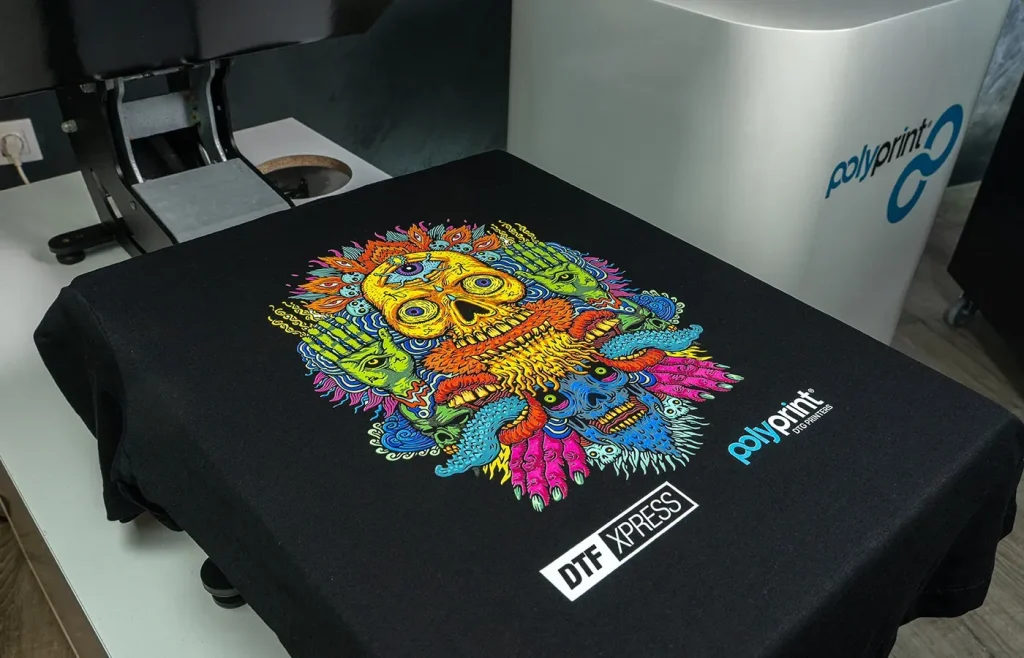DTF printing, also known as Direct to Film printing, represents a groundbreaking technique in the world of garment decoration, allowing for high-quality design transfers with vibrant colors and intricate details. This innovative process uses specially coated film to transfer designs onto fabrics, ensuring durability and a soft feel that many traditional methods struggle to achieve. As we delve into the intricacies of DTF printing, we will explore essential tips, advanced techniques, and the necessary equipment that can elevate your results to a professional standard. From understanding the DTF printing process to perfecting your application methods, this guide has everything you need to create stunning printed garments. Whether you are a seasoned professional or just starting, mastering the art of DTF printing can open up a world of creative possibilities for your projects.
When we talk about garment printing, terms like Direct to Film (DTF) printing highlight a significant advancement in printing technology tailored for fabrics. With techniques that emphasize efficiency and quality, DTF printing allows for exceptional design versatility and ease of use. This method encompasses a systematic approach of transferring ink onto a special film before applying it to your chosen fabric, resulting in brilliant and durable prints. Understanding these innovative printing strategies can greatly enhance your final products and give you a competitive edge in the market. In this analysis, we will guide you through the most effective DTF printing tips and equipment essentials to ensure your creations are both eye-catching and enduring.
Exploring the Basics of DTF Printing
DTF printing, or Direct to Film printing, is a unique method that has changed the landscape of textile design. Unlike traditional techniques like screen printing, DTF uses a film to transfer vivid designs onto fabric, enhancing both the vibrancy and precision of prints. This approach allows for intricate designs that can include gradients and fine details, which are often challenging to achieve with other methods.
In DTF printing, the process begins by printing the artwork onto a specialized film, which is then coated with an adhesive powder. This powder is key to ensuring that the ink bonds correctly with the fabric during the heat transfer process. This fascinating technology makes it an ideal choice for custom apparel projects, logos, and even personal designs, providing fashion designers and hobbyists alike with a new avenue for creativity.
Frequently Asked Questions
What is DTF printing and how does it work?
DTF printing, or Direct to Film printing, is a modern technique that transfers ink from a specially coated film onto fabric. This process begins by printing your design onto DTF film using a modified inkjet printer, followed by applying hot melt adhesive powder and then heat pressing it onto the garment. This allows for vibrant and detailed designs that are both soft to the touch and highly durable.
What equipment do I need for DTF printing?
To successfully execute DTF printing, you’ll need essential equipment such as a high-quality DTF printer, which is typically a modified inkjet model, DTF inks that adhere well, transfer films of top quality, and a reliable adhesive powder to bond the ink with the fabric. Investing in quality materials is crucial for achieving stunning results.
What are some tips for preparing for DTF printing?
Effective preparation is key for successful DTF printing. Begin by calibrating your printer settings correctly for the specific film you are using and perform regular maintenance on the print heads to avoid clogging. Testing your prints beforehand can help you achieve the perfect color saturation and vibrancy before starting a full production run.
What are optimal techniques for DTF printing?
To optimize your DTF printing results, ensure you start with high-quality designs and adjust your printer’s color settings for accuracy, especially with white and colored inks. For heat application, maintain temperatures between 320°F to 350°F for about 10-15 seconds to avoid damaging the design while ensuring a good transfer.
How should I care for garments printed with DTF printing?
Post-printing care is crucial to maintaining the quality of DTF printed garments. Allow the prints to cool completely before washing or wearing, and advise customers to wash the garments inside out in cold water, avoiding bleach and fabric softeners that can degrade the print quality.
What common issues might arise with DTF printing and how can I troubleshoot them?
Common issues in DTF printing include peeling of prints and poor color vibrancy. Peeling can indicate insufficient heat or pressure during the transfer, so check your application settings. Lackluster colors may arise from dirty print heads or incorrect ink settings, highlighting the importance of regular maintenance for achieving optimal results.
| Key Point | Description |
|---|---|
| What is DTF Printing? | A method that transfers ink onto fabric using a specially coated film, allowing for vibrant colors and intricate designs. |
| Process Breakdown | Includes design creation, printing on film, applying adhesive powder, curing, and heat transfer. |
| Equipment Needed | Quality DTF printer, high-quality inks, top-grade transfer films, and durable adhesive powder are essential. |
| Preparation Tips | Calibrate printer settings, maintain print heads, and conduct test prints for optimal results. |
| Optimal Techniques | Adjust color settings and apply heat correctly to ensure durability of the design. |
| Post-Printing Care | Allow prints to cool and advise proper washing to maintain print quality and longevity. |
| Troubleshooting Tips | Check heat settings to prevent peeling and ensure printer maintenance to avoid color issues. |
| Market Trends | Growing popularity among small to mid-sized clothing brands, cost-effective compared to screen printing. |
Summary
DTF printing is an innovative printing method that allows for stunning results on a variety of fabric types. By mastering the diverse aspects of this process—from equipment selection to post-printing care—you can achieve eye-catching designs that stand out in a competitive market. As DTF printing continues to gain momentum, staying informed and adapting your techniques will ensure you remain ahead in your creative endeavors.



